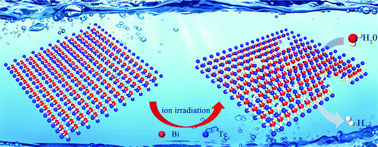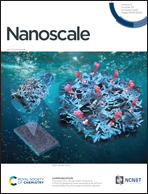Iron ion irradiated Bi2Te3 nanosheets with defects and regulated hydrophilicity to enhance the hydrogen evolution reaction†
Abstract
The introduction of defects can enhance the active sites on transition metal dichalcogenides, which can cause changes in crystal structures, and then lead to a change in the original catalytic performance. Herein, an efficient method of introducing defects was reported. In this method, high-energy iron ions were irradiated on the surface of Bi2Te3 nanosheets by ion irradiation technology, which resulted in the generation of a variety of defects. Compared to the original Bi2Te3 nanosheets, the Bi2Te3 nanosheets irradiated by iron ions showed significant improvement in the hydrogen evolution reaction performance in acidic solution. After the iron ion irradiation, the electric double layer capacitance of the Bi2Te3 nanosheets increased significantly, which indicated an increase in the number of active sites on the surface of Bi2Te3. Analysis of high-resolution transmission electron microscopy images reveals the occurrence of various defects on the surface of Bi2Te3 after the iron ion irradiation, which increased the active sites. Moreover, the conductivity of the iron ion-irradiated Bi2Te3 nanosheets was also significantly improved. It is noteworthy that iron ion irradiation changed the characteristic of the Bi2Te3 surface from hydrophobic to hydrophilic, which facilitated the release of hydrogen bubbles from the catalyst surface and exposed the active sites in time. At the same time, the damage caused by the large bubbles to the electrode material could be avoided, and the stability of the material was improved. This efficient iron ion irradiation method provides an innovative idea for the design of other high-efficient catalysts.



 Please wait while we load your content...
Please wait while we load your content...